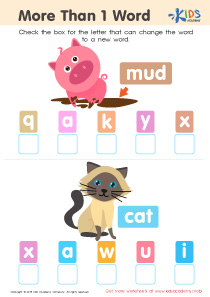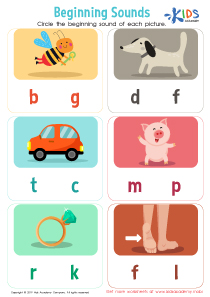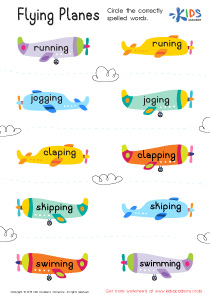Letter recognition Elementary Phonics Worksheets for Ages 5-7
5 filtered results
-
From - To
Enhance your child's early reading skills with our engaging Letter Recognition Elementary Phonics Worksheets, specifically designed for kids aged 5-7. These printable resources focus on helping young learners identify and distinguish letters, providing a solid foundation for phonics and reading proficiency. Each worksheet features fun activities, vibrant illustrations, and interactive exercises that make learning enjoyable and effective. Perfect for parents, educators, or homeschoolers, these worksheets can bolster your child's confidence while building essential literacy skills. Dive into the world of letters with our comprehensive set tailored to spark curiosity and promote mastery in elementary phonics. Start your child's reading journey today!


Long and Short U Worksheet
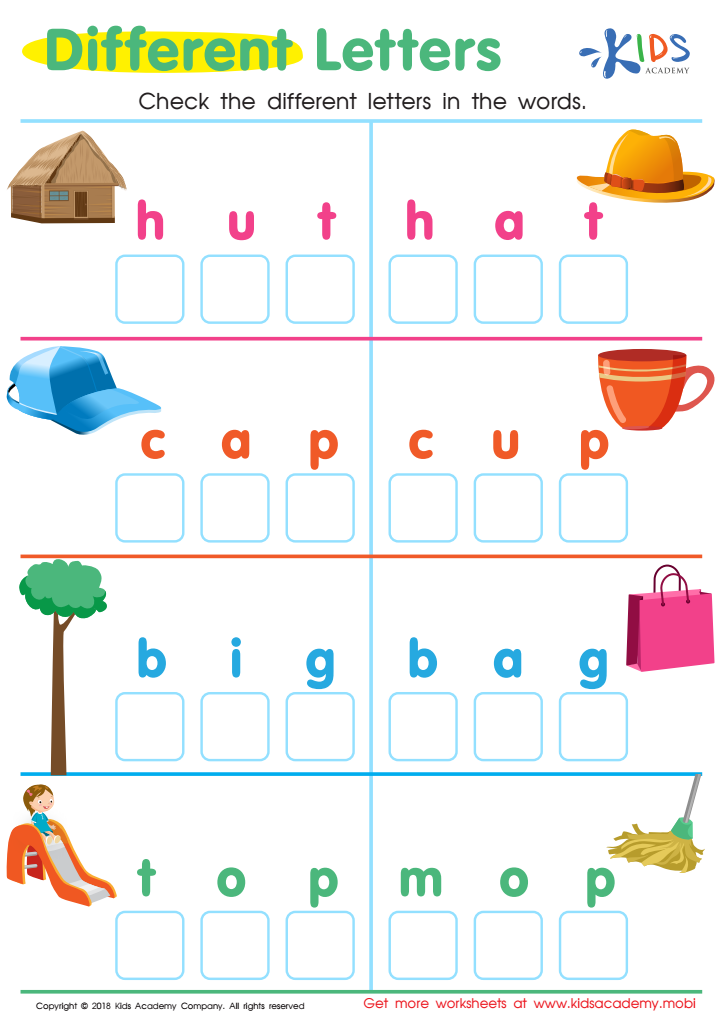

Different Letters Reading Worksheet
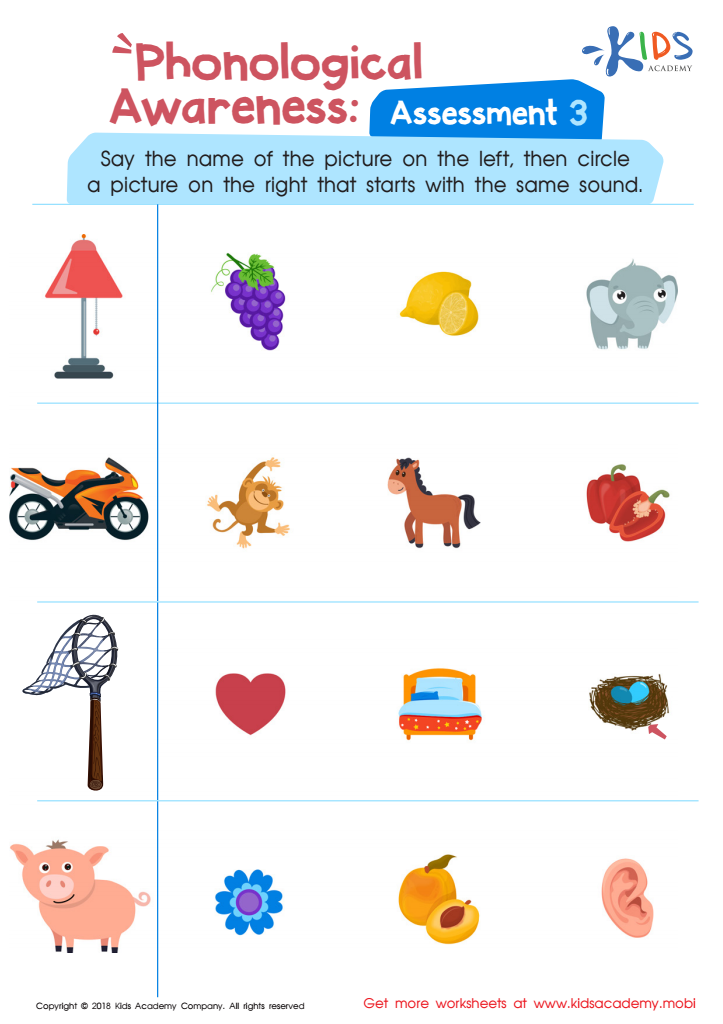

Phonological Awareness: Assessment 3 Worksheet


Long and Short E Worksheet
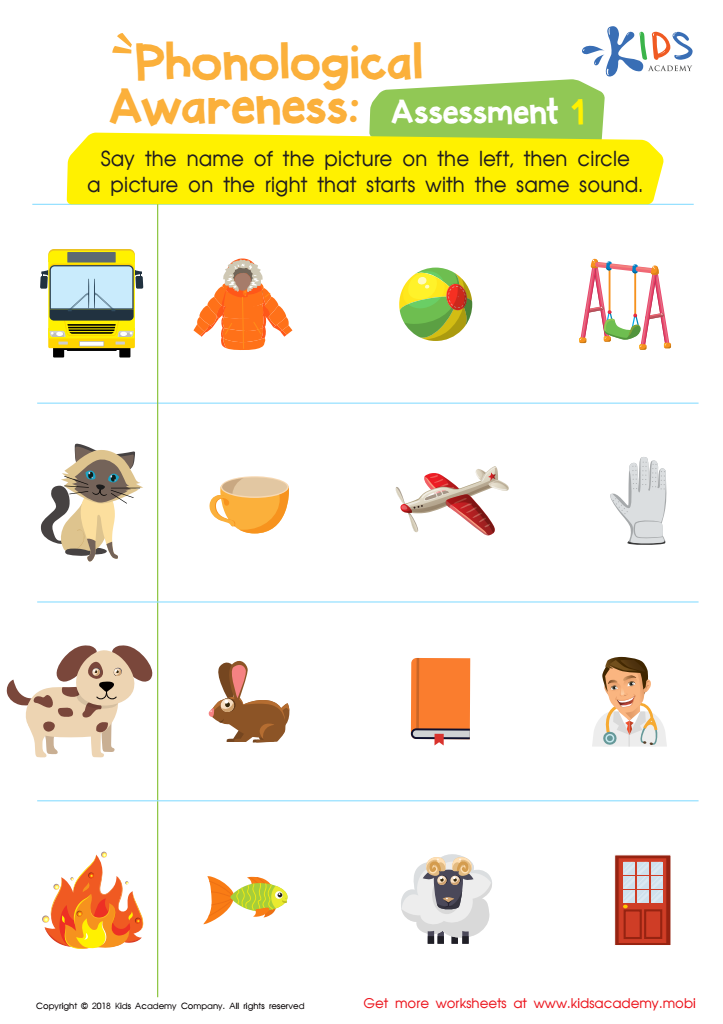

Phonological Awareness: Assessment 1 Worksheet
Letter recognition is fundamental to literacy development in children aged 5-7, making it a critical focus for both parents and teachers. This early stage in education serves as the building block for phonics and reading skills. When children can recognize letters, they can begin to understand the sounds that each letter makes and how these sounds combine to form words. This phonemic awareness is essential for reading fluency and comprehension.
By prioritizing letter recognition, parents and teachers help children gain confidence in their literacy abilities, promoting a love for reading from a young age. Familiarity with letters enables children to decode written words, paving the way for successful reading experiences as they progress through school.
Moreover, letter recognition encourages cognitive development, enhancing memory and attention skills. It supports children’s ability to follow directions, engage with text, and express themselves through writing. Early literacy skills correlate with academic success; strong readers often excel in other subject areas, impacting overall educational outcomes.
In a rapidly evolving world, strong literacy skills are crucial for future opportunities. Therefore, fostering letter recognition in young children ensures they have a solid foundation for lifelong learning. Parents and teachers play integral roles in nurturing these essential skills, shaping students' futures.
 Assign to My Students
Assign to My Students




